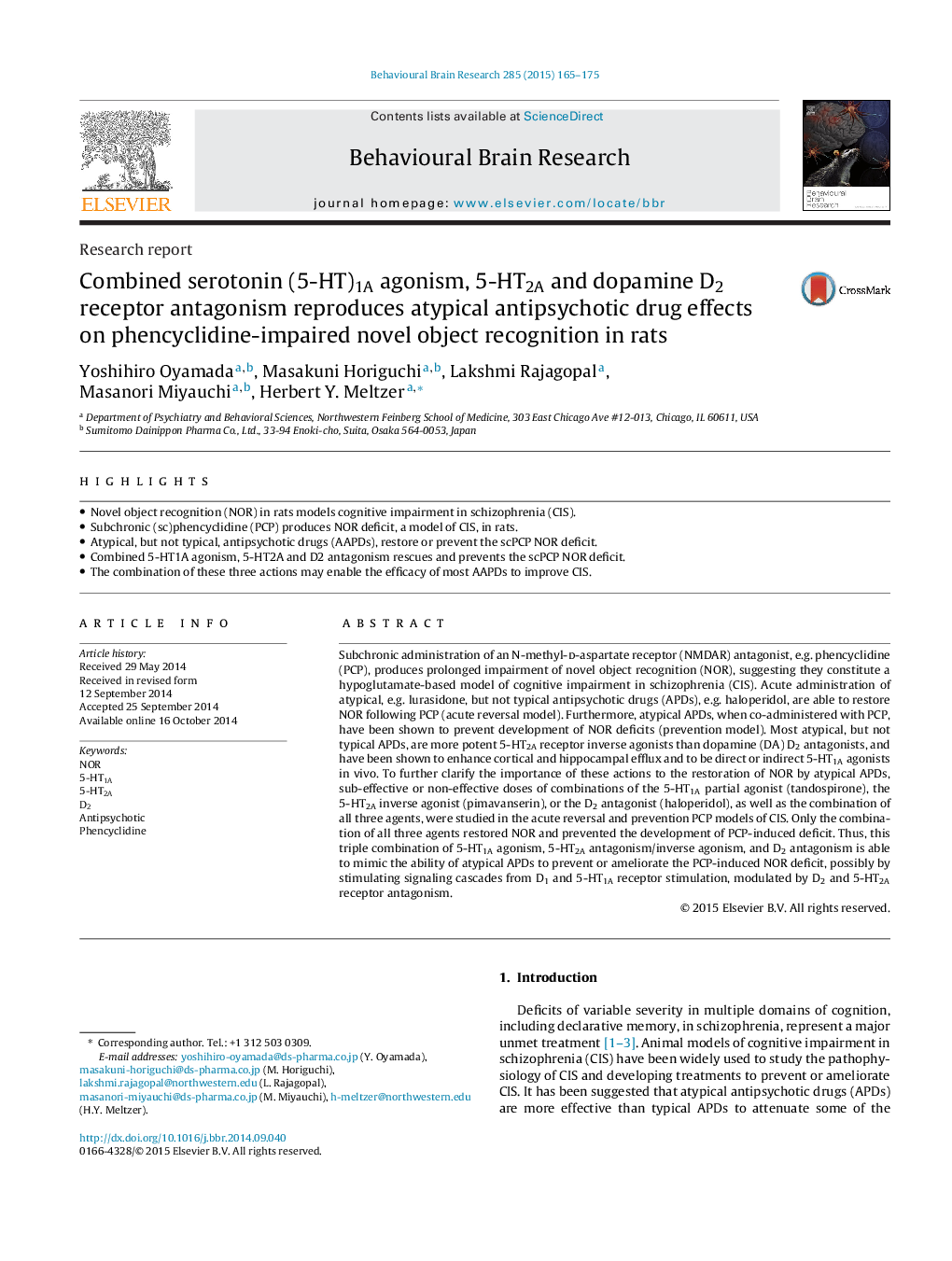| کد مقاله | کد نشریه | سال انتشار | مقاله انگلیسی | نسخه تمام متن |
|---|---|---|---|---|
| 6257231 | 1612947 | 2015 | 11 صفحه PDF | دانلود رایگان |

- Novel object recognition (NOR) in rats models cognitive impairment in schizophrenia (CIS).
- Subchronic (sc)phencyclidine (PCP) produces NOR deficit, a model of CIS, in rats.
- Atypical, but not typical, antipsychotic drugs (AAPDs), restore or prevent the scPCP NOR deficit.
- Combined 5-HT1A agonism, 5-HT2A and D2 antagonism rescues and prevents the scPCP NOR deficit.
- The combination of these three actions may enable the efficacy of most AAPDs to improve CIS.
Subchronic administration of an N-methyl-d-aspartate receptor (NMDAR) antagonist, e.g. phencyclidine (PCP), produces prolonged impairment of novel object recognition (NOR), suggesting they constitute a hypoglutamate-based model of cognitive impairment in schizophrenia (CIS). Acute administration of atypical, e.g. lurasidone, but not typical antipsychotic drugs (APDs), e.g. haloperidol, are able to restore NOR following PCP (acute reversal model). Furthermore, atypical APDs, when co-administered with PCP, have been shown to prevent development of NOR deficits (prevention model). Most atypical, but not typical APDs, are more potent 5-HT2A receptor inverse agonists than dopamine (DA) D2 antagonists, and have been shown to enhance cortical and hippocampal efflux and to be direct or indirect 5-HT1A agonists in vivo. To further clarify the importance of these actions to the restoration of NOR by atypical APDs, sub-effective or non-effective doses of combinations of the 5-HT1A partial agonist (tandospirone), the 5-HT2A inverse agonist (pimavanserin), or the D2 antagonist (haloperidol), as well as the combination of all three agents, were studied in the acute reversal and prevention PCP models of CIS. Only the combination of all three agents restored NOR and prevented the development of PCP-induced deficit. Thus, this triple combination of 5-HT1A agonism, 5-HT2A antagonism/inverse agonism, and D2 antagonism is able to mimic the ability of atypical APDs to prevent or ameliorate the PCP-induced NOR deficit, possibly by stimulating signaling cascades from D1 and 5-HT1A receptor stimulation, modulated by D2 and 5-HT2A receptor antagonism.
Journal: Behavioural Brain Research - Volume 285, 15 May 2015, Pages 165-175